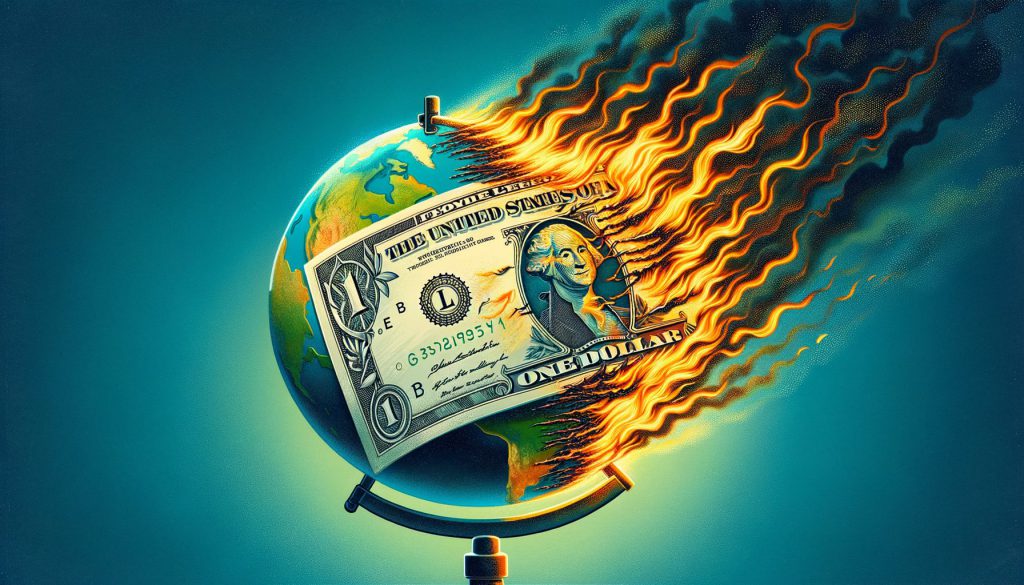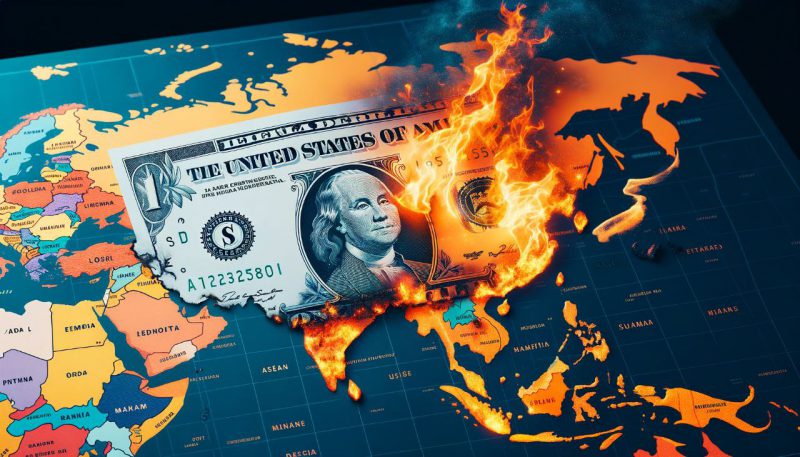The Association of Southeast Asian Nations population, referred to as ASEAN, recently held its ASEAN-China-GCC summit in Kuala Lumpur, Malaysia. The summit was attended by leading administrative officials from China and other GCC nations, reflecting the bloc’s plan to help establish harmonious relationships within the aforementioned global circuit. Malaysian PM Anwar Ibrahim was noted for making active calls for the bloc’s increased diversification towards China and GCC nations to insulate ASEAN nations from the harsh US tariffs policy. While the calls made during the summit promote regional dependence and unity, this diversification may become lethal for the US dollar in many ways. Here are the three main reasons promoting the anti-dollar narrative.
Also Read: 11-Nation ASEAN Bloc Challenges US Pacific Influence
ASEAN’s Move May End Up Injuring the US Dollar: Here’s How
1. Reduced Dollar Demand


Malaysian PM Anwar Ibrahim has called to unite forces, urging China and GCC nations to promote regional harmony with ASEAN.
“What is important is a cohesive, strong, fiercely independent ASEAN. That would confirm our position of centrality and that would decide to act to protect our interests.”
A similar sentiment was echoed by Malaysia’s foreign minister, Mohamad Hasan, who stated that ASEAN needs to better its regional connection to weather economic shocks.
“ASEAN nations are among those most heavily affected by the U.S.-imposed tariffs. We must seize this moment to deepen regional economic integration. So that we can better shield our region from external shocks.” Mohamad Hasan, the foreign minister of Malaysia, stated.
Such calls for diversification carry the essence of aftershocks prompted by the US, the stark US tariff policies that threaten to disrupt the global order. If this ASEAN unity bundles up tightly, this could affect the demand for the US dollar in the area, prompting the nations involved to deliver independent trade narratives based on local currencies.
2. Rise of Alternative Financial Systems


ASEAN has always promoted local currency usage within its circuit. The recently held summit, which had delegates from China and GCC nations, also promoted this idea of regional harmony, which could translate to the nations involved transacting in local currencies only. This would prompt nations to carve out alternative financial systems away from the US dollar, thus affecting its demand and prestige in the process.
“ASEAN member states are looking to diversify. Facilitating exchanges between the Gulf and the People’s Republic of China is one aspect of this diversification.” As stated by Chong Ja Ian from the National University of Singapore (NUS).
3. US Dollar’s Prestige To Tank?


If ASEAN’s plan to shift away from the US dollar works, it would bring forth a new perspective, one that promotes the idea of a world without USD supremacy.
The narrative may trigger a chain reaction, pushing the US dollar to the sidelines as other dominant currencies take the lead in promoting global trade harmony. Although the idea is ambitious, several analysts already believe that the US dollar hegemony is inching towards its demise.
“My thesis is that the U.S. dollar is about to get knocked down a couple pegs.” Said Rogoff, a professor of economics and the Maurits C. Boas Chair of International Economics. “It will still be first in global finance, because nothing is poised to fully replace it. The dollar just won’t be as unique as it once was.”
Also Read: Goodbye US Dollar: ASEAN Nations Sign Deals To Trade in Local Currency





